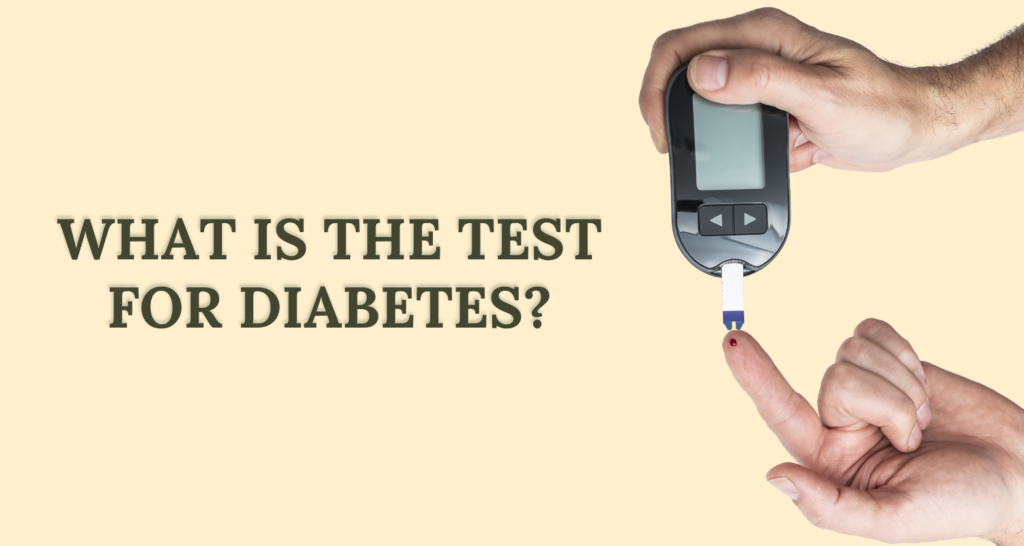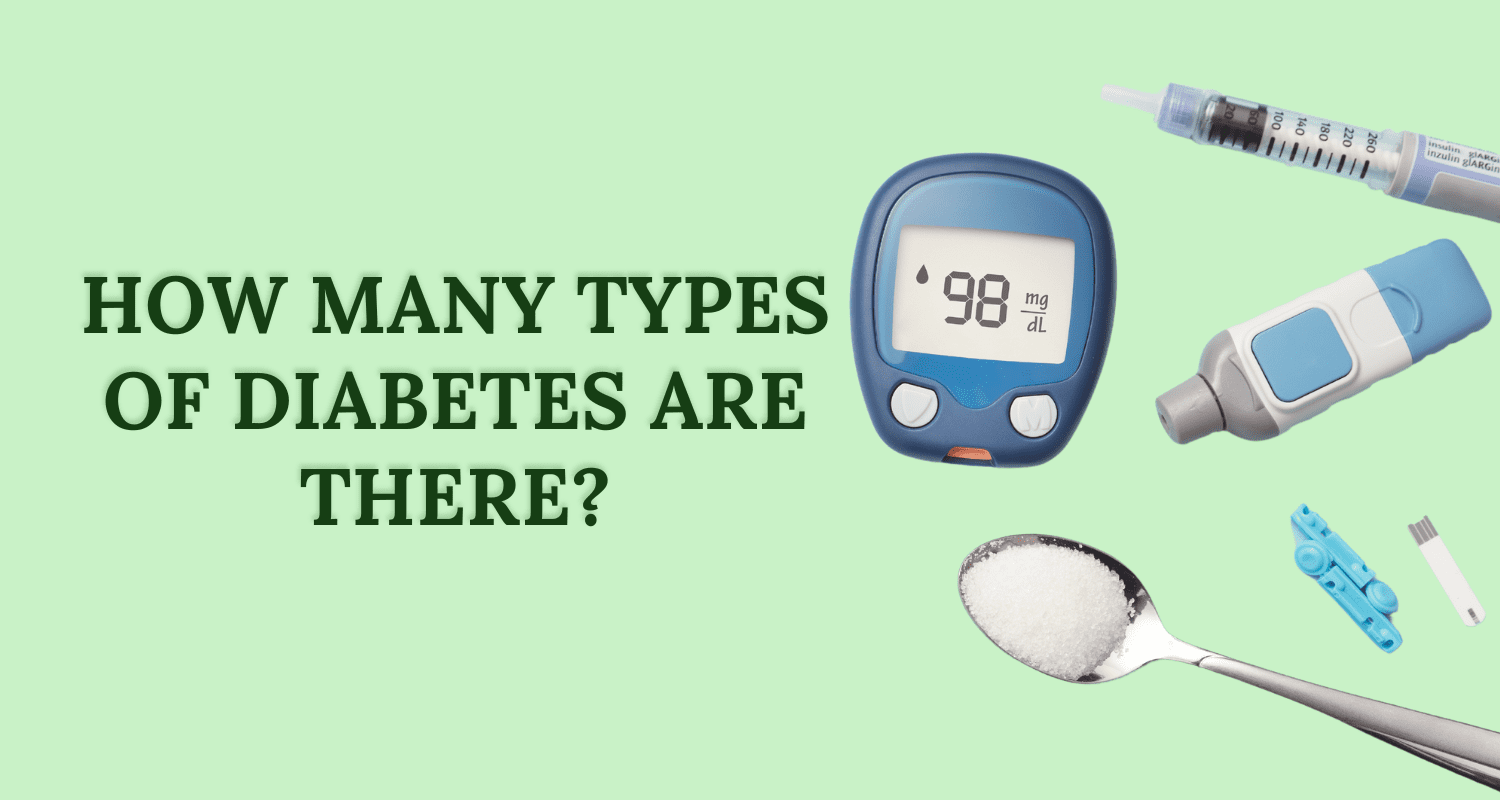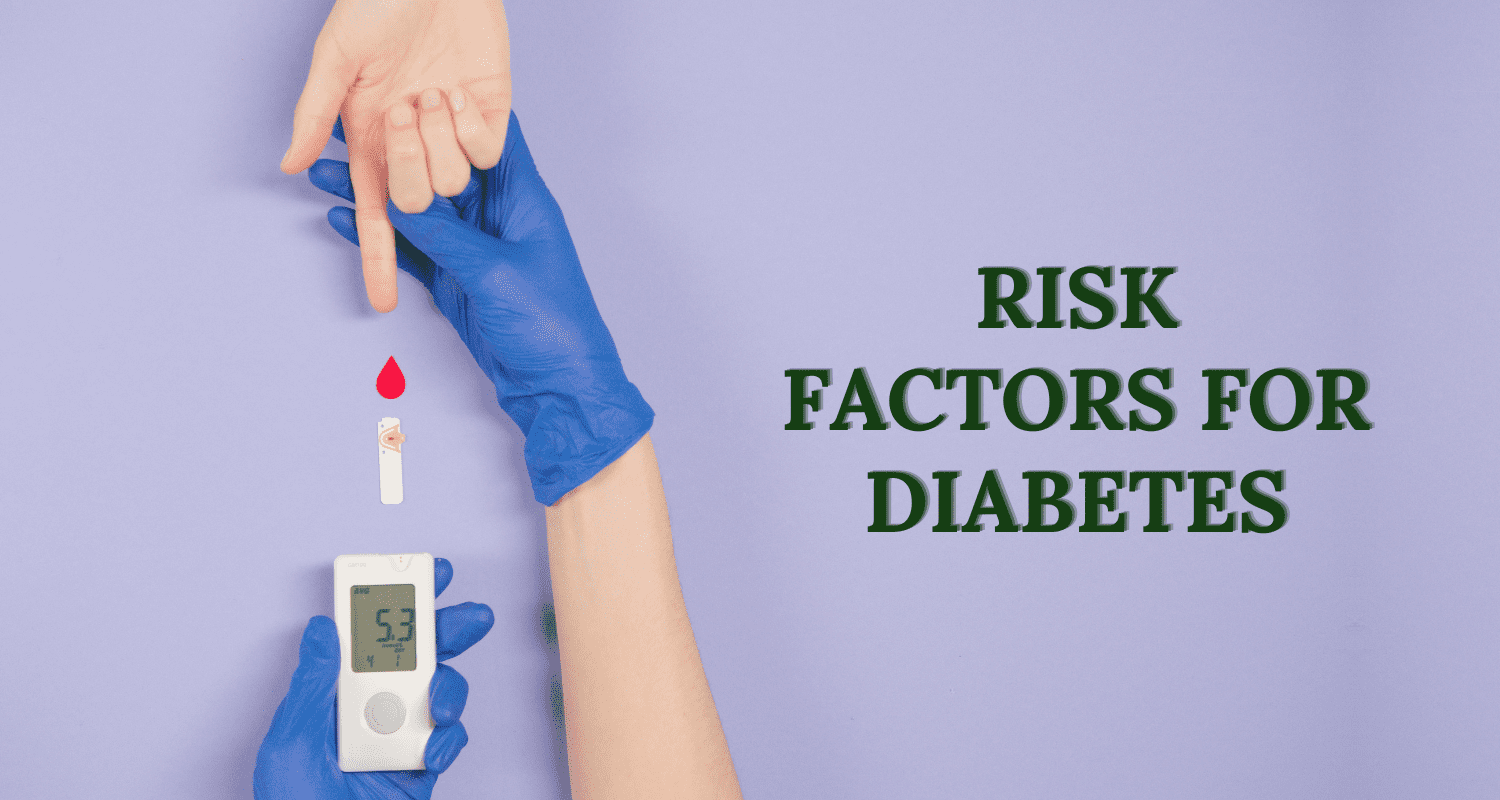About 34.2 million people in the United States have diabetes. This health issue can happen to anyone, young or old. If not managed correctly, diabetes can cause serious health problems.
In this article, we’ll explore what is the test for diabetes, which determines whether you have diabetes, prediabetes, or are at risk during pregnancy. It’s best to consult a doctor for a diagnosis, as at-home blood tests may not provide accurate results.
If you experience symptoms of diabetes or have certain risk factors, such as being overweight, having a family history of diabetes, or belonging to a specific ethnic group, it’s important to get tested. Medicare and many insurance plans cover the cost of these tests for individuals at risk.
Let’s delve into what is the test for diabetes.
Key Takeaways:
- What is the test for diabetes? Doctors use blood tests to diagnose diabetes and determine the type of diabetes.
- Self-diagnosis with over-the-counter blood testing equipment is not reliable; consulting a healthcare professional is essential.
- Testing is recommended for individuals with symptoms of diabetes or those with risk factors such as obesity, family history, or certain ethnic backgrounds.
- Medicare and other insurance providers may offer coverage for diabetes testing.
- Early diagnosis and management are crucial in preventing complications associated with diabetes.
Who Should Be Tested for Diabetes?
If you have symptoms of diabetes or specific risk factors, it’s vital to get tested. Early diagnosis is key to managing the disease well.
Symptoms: Feeling constantly thirsty and needing to pee a lot are red flags. They could mean your blood sugar is high. It’s important to see a doctor if you notice these signs.
Risk Factors: People over 35 face a higher risk, as do those with a diabetes history in their family. Being overweight or obese, or having had gestational diabetes, also ups the odds.
Certain ethnic backgrounds, like American Indian, Black, Asian American, Hispanic/Latino, or Pacific Islander, carry more risk. If these points apply to you, getting tested sooner rather than later is wise.
For those at a higher risk, catching diabetes early is crucial. It allows healthcare professionals to start needed treatments promptly. These efforts focus on keeping blood sugar under control and avoiding severe health issues down the road.
Types of Diabetes and Diagnostic Tests
Diabetes is a serious health issue impacting millions worldwide. It’s vital to know which diabetes type someone has. This helps doctors tailor the best treatment. The main types are type 1, type 2, and gestational diabetes. Diagnostic tests are key in figuring out which is which.
Type 1 Diabetes
Juvenile diabetes or type 1 often appears in kids and young adults. It happens when the body’s defense system destroys cells making insulin. People with type 1 need to take insulin their whole lives to keep their blood sugar in check.
Type 2 Diabetes
Most often found in adults, type 2 diabetes is on the rise in younger age groups too. It’s about the body resisting insulin, the hormone that controls blood sugar. Lifestyle changes and sometimes medicine are used to treat type 2.
Gestational Diabetes
Gestational diabetes shows up during pregnancy, causing high blood sugar. Though it usually goes away after birth, it can hint that type 2 diabetes might develop later. Managing it while pregnant is important for both the mother’s and the baby’s health.
Diagnostic tests help pinpoint the type of diabetes. They check blood sugar levels, aiding in diagnosis and treatment plans.
What is the test for diabetes? Some common tests for diabetes include:
- A1C Test: This measures average blood sugar over 2 to 3 months without needing fasting. A result of 6.5% or higher may mean diabetes.
- Fasting Plasma Glucose Test: It tests blood sugar after an overnight fast, typically in the morning. A level of 126 mg/dL or more confirms diabetes.
- Oral Glucose Tolerance Test (OGTT): After having a glucose drink, blood sugar is checked. For gestational diabetes or type 2, 200 mg/dL or above after 2 hours shows diabetes.
- Random Plasma Glucose Test: Done without fasting, this checks for diabetes when symptoms appear suddenly. A result of 200 mg/dL or higher indicates diabetes.
These tests help doctors and diabetes educators deeply understand a person’s situation. Early detection and the right treatment plan are key. It’s important for anyone showing symptoms or at risk to get tested promptly with a healthcare provider.
A1C Test for Diabetes
The A1C test is a blood test used to diagnose diabetes. It checks a person’s average blood sugar levels over 2 to 3 months. What makes it handy is that you don’t need to fast before taking it.
A higher A1C result means your average blood sugar has been high. A level of 6.5% or more shows you have diabetes. If your result falls between 5.7% and 6.4%, it means you have prediabetes. This is when your blood sugar is higher than normal, but not high enough for diabetes.
Although the A1C test is reliable for most people, there are exceptions. It might not be accurate if you’re pregnant or have certain types of anemia. In these situations, extra tests may be needed to confirm a diabetes diagnosis.
This test is vital for finding and managing diabetes. It gives doctors a broad look at how well your blood sugar has been controlled. This helps in making sure the diagnosis is right and planning the best treatment.
Fasting Plasma Glucose Test
The fasting plasma glucose (FPG) test checks your blood sugar level after fasting for 8 hours. It’s usually done in the morning before you eat anything. This test helps see if you might have diabetes or prediabetes.
A small blood sample is taken to measure your fasting blood sugar. If you have 126 mg/dL or more, it may mean you have diabetes. Results between 100 and 125 mg/dL could signal prediabetes. Not eating before the test is important to get correct results.
This test is often the first one doctors use to check for diabetes. It gives them key details they need to plan the best treatment for people with diabetes.
Oral Glucose Tolerance Test (OGTT)
The Oral Glucose Tolerance Test (OGTT) checks blood sugar levels before and after you drink a sweet solution. This test helps detect type 2 diabetes, prediabetes, and diabetes during pregnancy (gestational diabetes).
You can’t eat anything before the OGTT. Blood samples are taken before and after you drink the liquid. These samples show how your body handles sugar. They help doctors know if your blood sugar is in a healthy range.
A blood sugar level above 200 mg/dL 2 hours after the drink means you likely have diabetes. Levels between 140 and 199 mg/dL show prediabetes.
The OGTT takes more time and costs more than some tests. However, it gives detailed information on your blood sugar. This helps doctors diagnose type 2 diabetes, prediabetes, and gestational diabetes accurately.
Things To Remember:
1. The Oral Glucose Tolerance Test (OGTT) measures blood sugar levels before and after you drink a sweet solution.
2. It finds type 2 diabetes, prediabetes, and gestational diabetes.
3. You need to fast before the test, and blood samples are taken at different times.
4. A blood sugar level of 200 mg/dL or higher 2 hours after drinking means you may have diabetes.
5. Between 140 and 199 mg/dL shows you might have prediabetes.
6. Compared to other tests, the OGTT is longer and costs more. But it gives great details for diagnosis.
Random Plasma Glucose Test
The random plasma glucose test checks blood glucose levels in people with severe diabetes symptoms, anytime in the day. It’s a simple blood test and does not need fasting. This makes it handy and quick to do.
A healthcare worker takes a blood sample and checks the glucose levels. If the level is 200 mg/dL or more, it confirms diabetes. With this fast result, proper treatment can start immediately.
But, an extra test in a lab is needed for an official diabetes diagnosis. This step double-checks the results for accuracy.
This test is great for quick checking when severe symptoms appear. It lets medical teams find diabetes fast and start the right treatment to control it.
What Do Test Results Tell Me?
Understanding test results for prediabetes and diabetes is key to knowing someone’s health. Special tests give specific numbers showing if someone is in a good, risky, or bad spot health-wise.
The A1C test tells you about your average blood sugar over several months. If it’s under 5.7%, your blood sugar levels are good. Between 5.7% and 6.4% means you might have prediabetes. Over 6.5% show you have diabetes.
With the fasting plasma glucose test, they check your blood sugar after fasting for 8 hours. A number under 100 mg/dL is normal. Between 100 and 125 mg/dL means you could be heading towards diabetes. 126 mg/dL or more? It’s likely diabetes.
The oral glucose tolerance test (OGTT) sees how your body manages sugar. Drinking glucose, levels under 140 mg/dL after 2 hours is good. Between 140 and 199 mg/dL means you might get diabetes. 200 mg/dL or higher after 2 hours shows it’s diabetes.
For sudden severe diabetes symptoms, doctors may do a random plasma glucose test. If it shows over 200 mg/dL, it could be diabetes.
Remember, doctors are the ones who should look at these results. They consider a lot of things to make a correct call about your health.
Identifying Diabetes Type
Figuring out what type of diabetes someone has might need extra tests. It’s key to spot the differences between type 1 and type 2. This is because the way we treat them can be different. Tests like genetic testing and autoantibody tests are often used.
Genetic Testing for Diabetes
Genetic testing can find most types of monogenic diabetes. This is when a single gene mutation causes the disease. The test looks at someone’s DNA to see if there are any changes linked to diabetes. It helps doctors see if someone might inherit diabetes. Or, if they already have diabetes, they can learn if it’s due to a gene mutation.
Autoantibody Tests
Autoantibody tests look for type 1 diabetes markers in the blood. They are great for those with a family background of type 1 diabetes. Type 1 diabetes happens when the body’s defense system destroys cells in the pancreas that make insulin. These tests aid in confirming if someone has type 1 instead of type 2 diabetes.
What is the test for diabetes? Using these tests, healthcare workers can pin down the type of diabetes a person has, be it type 1, 2, or others. These details are vital for making a treatment plan suited to the individual. It also helps in suggesting lifestyle changes to best control the condition.
Conclusion
What is the test for diabetes? Testing is key in finding and treating diabetes correctly. Blood tests like the A1C, fasting glucose, and others help spot diabetes and prediabetes. Always see a doctor for testing. Self-testing isn’t reliable.
These tests show your blood sugar levels to doctors. Then, they can make a plan just for you. Testing often is a must to control diabetes and avoid problems. By keeping up with tests, you can stay on top of your health.
Living with diabetes means being active in your care. See your doctor regularly and adjust your plan as needed. Team up with your healthcare providers they can suggest to you what is the test for diabetes. Together, you can take charge of your diabetes and have a vibrant life.
FAQs
What is the test for diabetes?
The primary test for diabetes is the fasting plasma glucose test, which measures blood sugar after fasting for at least 8 hours.
What tests confirm diabetes?
Diabetes can be confirmed with the fasting plasma glucose test, oral glucose tolerance test, or the A1C test.
How to test for type 2 diabetes?
Type 2 diabetes is typically tested using the fasting plasma glucose test, oral glucose tolerance test, or A1C test.
How can I self test for diabetes?
You can use a home glucose meter to check your blood sugar levels, but official diagnosis should be done by a healthcare professional.
What is a normal glucose level?
A normal fasting blood glucose level is below 100 mg/dL (5.6 mmol/L).
What is the true test for diabetes?
The true test for diabetes is the fasting plasma glucose test, oral glucose tolerance test, or A1C test.
What is the first test for diabetes?
The first test often conducted for diabetes is the fasting plasma glucose test.
Disclaimer: This content, including advice, provides generic information only. It is not a substitute for a qualified medical opinion. Always consult a specialist or your doctor for more information. Nutrition Cult does not claim responsibility for this information.




